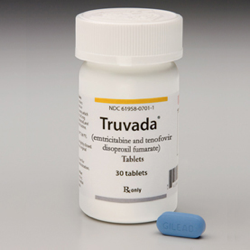
US regulators took a step into the unknown this week when they approved the first drug to prevent HIV infection. US Food and Drug Administration (FDA) commissioner Margaret Hamburg hailed the pill, Truvada, as a tool for reducing the rate of infection in the United States, where 50,000 people are diagnosed each year. But the drug combines low doses of two antiretroviral agents normally used to treat infection, and some researchers fear that its use in healthy people could have unacceptable side effects and spark the emergence of resistant viruses.
US insurers must now decide whether they will pay for Truvada, which costs roughly US$10,000 for a year’s supply. Moreover, health-policy experts must script guidelines on how to prescribe it, and how to monitor side effects and HIV infections in people using the drug. “There are a lot of questions about how to implement it,” says Connie Celum, an HIV researcher at the University of Washington in Seattle, who led a large trial of the drug in East Africa and has begun studies to answer practical delivery questions, such as which subsets of people are at highest risk.
